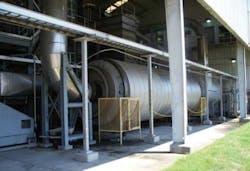Water Industry Companies Take on Gulf Oil Spill
The BP oil well blowout in the Gulf of Mexico has been a disaster of epic proportions, but it has also been a business opportunity for a large range of companies that serve the water industry. A variety of companies have products in demand for the Gulf cleanup, including suppliers of oil dispersants, skimming systems, oil/water separators and testing equipment.
Perhaps one of the highest-profile water industry companies involved in the cleanup is Nalco, which provided its Corexit oil dispersant systems. Nalco is a global water treatment and process improvement company.
Although environmentalists raised concerns about the impact of dispersants on sea life, EPA testing in June and July indicated that none of the eight dispersants tested, including the Nalco product, displayed biologically significant endocrine disrupting activity.
“We are pleased that the EPA’s initial testing results of dispersant alternatives continue to show the safety of our Corexit 9500 dispersants,” said Dr. David Horsup, Division Vice President, Research and Development for Nalco’s Energy Services division.
In announcing the test results, EPA Assistant Administrator Paul Anastas said the EPA is not recommending any change in dispersants used to fight the Gulf spill’s impact.
The agency’s press release said all the dispersants it tested “have roughly the same impact on aquatic life.” In fish species tests Corexit 9500 was identified by the EPA as one of two products included in the safest category. The EPA also stated that dispersants biodegrade, have not been found in the water column and have not settled on the floor of the gulf.
EPA continues to monitor BP’s use of dispersant in the Gulf. In a second round of testing, EPA determined that the dispersants appeared to increase the efficiency of natural biodegradation by 50 percent, and there was no evidence of harm to wildlife from the dispersants used in the Gulf.
To view data on the testing, please visit: http://www.epa.gov/bpspill/dispersants.
Oil Skimmers
Abanaki Corp. reported that its patent-pending Fuzzy2™ oil skimmer material was being used in the Gulf, recovering up to 385 gallons of oil per minute from the water’s surface. The Fuzzy2 material is attached to the surface of 30-inch diameter skimming disks on a floating skimmer made by Crucial Inc. of Gretna, LA.
A disk skimmer uses a rotating disk to remove oil from water. Oleophilic (oil attracting) material collects oil as the disk passes through the water, and wiper blades scrape off the oil for collection. Unlike other skimmer disk materials, Fuzzy2 has a hairy surface that greatly increases its surface area, making it more effective at removing oil floating on water.
“The beauty of the Fuzzy2 is that it can be retrofitted to virtually any brand of drum or disk type skimmer out there, making it possible for existing skimmers to triple their pickup rate,” said Abanaki President Tom Hobson.
Enviro Voraxial Technology received a purchase order from BP to deploy and test the underwater version of its high volume Voraxial 4000 Separator. The system allows operator to separate oil from water in the ocean. By conducting the separation in the ocean, the vessels can skim oil for 10 times longer since the amount of water collected in the holding tanks is reduced by 90%. The collected oil will be discharged into a holding tank while the clean water remains in the ocean. This differs from the current methods of skimming large volumes of oil/water mixture and then conducting the separation on a vessel.
EVTN is currently developing an new sea-going vessel equipped with its skimming system. The vessel, less than 40 feet in length, could deploy twin Voraxial 4000 Underwater Separators with a combined 1,400,000 gallons per day capacity.
Monitoring Systems
A variety of companies with monitoring equipment have reported involvement in the Gulf Spill.
Specialist instrumentation rental company Ashtead Technology said is instruments have been used by several organizations both at the scene of the Deepwater Horizon rig and also along the affected shoreline.
Turner Designs is providing in situ and Laboratory Fluorometers specifically configured to detect crude oil for tracking the Gulf Oil spill. Equipment being deployed includes the C3 Submersible Fluorometer, as specified in the USCG SMART protocol; the Cyclops-7 Submersible Crude Oil sensor with DataBank, and the Trilogy Laboratory Fluorometer for discrete sampling on shipboard.
InfraCal TOG/TPH Analyzers, manufactured by Wilks Enterprise, were called upon to measure total oil and grease (TOG) and total petroleum hydrocarbon (TPH) concentration levels in water and soil samples. The portable analyzers are ideal for use by non-tech personnel in the field. Total analysis time is 10-15 minutes which eliminates the need to wait for off-site lab results.


